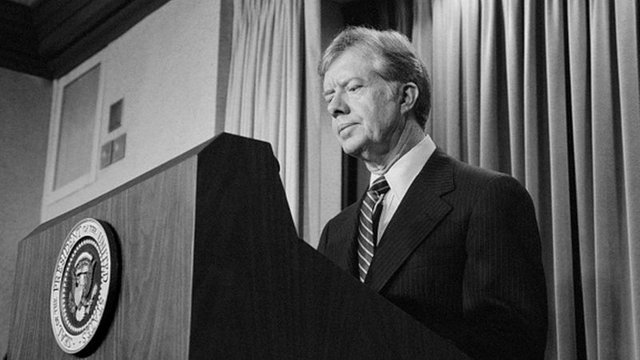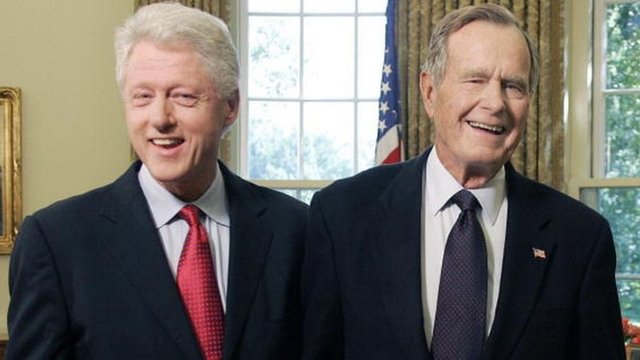Donald Trump became the sixth President of the United States to re-race but failed to win a second term election while in office since the early 1900s.
Four Republican Presidents and one Democratic President had previously competed for a second term but failed to win.
William Howard Taft (1909-1913, Republican Party)
Republican President William Howard Taft, who won the election in 1908, once again competed in the 1912 election, but lost the seat by a large margin to Democrat candidate Woodrow Wilson. In the election, Wilson won 435 delegates, while Taft won only two states, taking 8 delegates. Theodore Roosevelt, who broke with Taft, left the Republicans and formed a separate party, won 88 delegates.
Thus, Wilson served as the President of the United States during the First World War and after the borders of Europe were determined.

Herbert Hoover (1929-1933, Republican Party)
Then, when Republican Herbert Hoover, who won the 1928 presidential election, took office in 1929, the global economic crisis known as the "Great Depression" broke out.
In the election of 1932, voters withdrew their support for Hoover, whose performance in the face of the economic crisis did not like. Its voting rate dropped from 58 percent in the previous election to 39 percent, and it received 59 delegates from only six states.
Meanwhile, Roosevelt, who joined the Democratic Party, won the election with 472 delegates.

Gerald Ford (1974-1977, Republican Party)
Gerald Ford, the deputy of Richard Nixon, the only president of the United States to resign, took the presidency following his resignation in 1974.
When Nixon resigned, his second term was two more years to come. Ford, vice president of the Republican Party, competed for the presidential election in 1976 after two years of presidency.
However, he lost 297 to 240 delegates in the election against Democrats' candidate Jimmy Carter. Ford had 48 percent of the votes.
Jimmy Carter (1977-1981, Democratic Party)

Jimmy Carter, who became US president after defeating Ford, became the only Democratic US President to lose his election for a second term while in office throughout the 20th and 21st centuries.
Carter was the only US President to not send a candidate to the Supreme Court, despite serving four years.
Preferring to take peaceful steps during the tense times of the Cold War, Carter initiated the return of the Panama Canal to Panama's control, led the Camp David talks that ended in 1978 with an agreement between Egypt and Israel, and would restrict the use of nuclear weapons with the Soviet Union. and signed an agreement to take control.
However, in his last year, a 444-day hostage crisis started at the US Embassy in Iran. 52 American diplomats and citizens were still held as hostages during the 1980 election.
In the 1980 election, Carter lost to Republican candidate Ronald Reagan, who promised to take a very tough stance against Soviet Russia.
George HW Bush (1989-1993, Republican Party)

George Bush (Father Bush) was the last minister to lose his seat while competing for a second term until Donald Trump.
The Republican President helped Republicans win for the third time in the 1988 election, after Ronald Reagan's two-term harsh policies.
But the country faced a new economic crisis in the early 1990s and Bush passed a new law that increased taxes. Unemployment levels also rose. This situation angered some Republicans.
Ross Perot, a famous business person from Texas, also participated in the election and ran a campaign that argued that neither party could solve the economic crisis in the country. Bush won 168 delegates with 37 per cent of the election, while his opponent Democratic candidate Bill Clinton got 370 delegates with 43 per cent.
Bush blamed Perot, who received 19 percent of the vote for his failure. However, polls have revealed that Perot, the highest-voted candidate who competes without being Republican or Democrat in US history, has the support of equal voters from both parties.
Donald Trump (2017-2021 *, Republican Party)
In 2016, the Democrats' candidate won around 304 delegates in states with more delegates, although he received nearly 3 million less votes nationally than former Secretary of State Hillary Clinton, or 2 percent.
So he entered the White House in 2017.
Although unemployment rates fell during his presidency, he was criticized for not managing the coronavirus epidemic that affected the whole world since the beginning of 2020.
In its last year, protests against racism and police violence spread across the country against the murder of black citizens by the police and the police's punishment. When Trump wanted to use the military to suppress the demonstrations, tensions rose and drew backlash.
Its anti-immigrant policies, its actions such as asking for a budget to build a wall on the Mexican border, and preventing Green Card holders from entering the country were criticized for "polarizing effect" in the country.
In his four-year period, despite the developments in the economy, he lost the election.
In the US, one person can hold two presidencies. So Trump has the right to compete in the 2024 election once again.
There is only one name in US history who lost his seat at the end of the first term and became a candidate again in the next election and thus held the presidency intermittently for two terms: Gover Cleveland.
Democrat Cleveland left the seat after losing the 1888 election after serving as president for a term between 1885 and 1889.
In 1892, he competed once again against the Republican President Benjamin Harrison, this time winning and returning to the White House four years later.
Harrison was the last US President to fail in office before the 1900s, before Taft.
The tradition of two consecutive terms of presidents became more common in American political life after the 1900s.
The results of the 2020 elections have not been officially announced yet. Democrat candidate Joe Biden won the election, according to the result when almost all of the yo were counted. After the legal processes, the winner is expected to be officially announced until 20 January 2021.